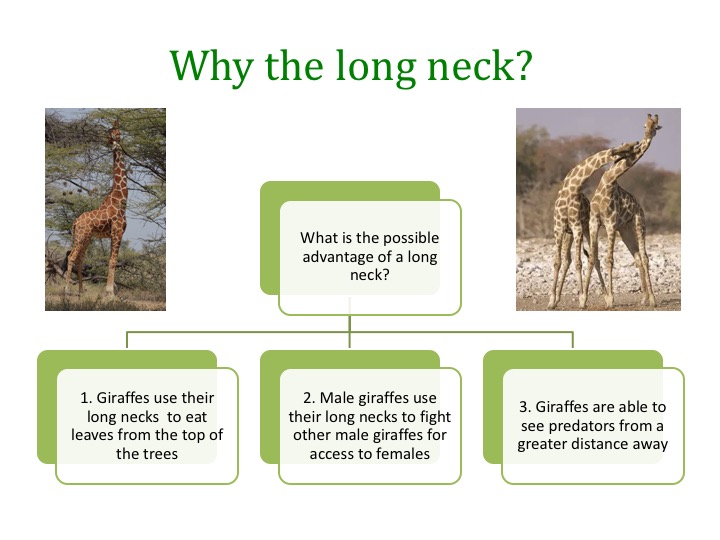Natural selection teaching resources
Worksheets and lesson ideas to challenge students aged 11 to 16 to think hard about evolution by natural selection (GCSE and Key Stage 3)
Where to start?
Start with a box of celebrations. Ask students to take out one sweet of their choice. Once everyone has taken a sweet show students which chocolates are left. Show students the initial numbers of each sweet. Students can now record the number of each sweet remaining working out the change in proportions. Now introduce the model. The students are the predatory birds. The chocolates represent a population of butterflies:
- how did we represent variation in the population of butterflies? How did this variation come to exist?
- which butterfly types were most consumed?
- which butterfly types were least consumed?
- which butterfly was therefore best adapted?
- over time, what will happen to the population of butterflies? Refer to the proportion of each butterfly type.
 Evolution of neck length in giraffes
Evolution of neck length in giraffes
GCSE storyboard activity to explain neck length in giraffes. This activity uses giraffe necks to understand evolution by natural selection. It starts off by considering what the possible advantages of long necks could be. Students first learn how neck length evolved according to the ‘competing browsers’ hypothesis and then apply these ideas to ’necks for sex’ hypothesis. A story board is used so that students gain an appreciation of the distinct stages involved as often natural selection is incorrectly considered to involve just one stage. (PDF)
The case study of the peppered moth
It’s important to use a range of case studies to help students understand evolution in the natural world. Check out this article on the peppered moth.
Understanding evolution by natural selection – the role of mutation
GCSE questions to help understand evolution by natural selection. This teaching activity uses a simple example of ducks crossing the road to challenge students’ understanding of evolution. It uses the video above to engage students and introduce the context of the lesson. Students are made to think about differential survival and adaptation from a concrete starting point. They work in groups to use the principles of evolution by natural selection to think about which duckling would survive and the consequences to the population. (PDF)
Evolution of antibiotic resistance
GCSE questions on the evolution of antibiotic resistance. Students use their understanding of natural selection to explain antibiotic resistance in bacteria. They read about a patient who has become infected with penicillin-resistant bacteria and advise the doctor on what to do next. (PDF)
Antibiotic resistance in action
This news story from the BBC about the ‘world’s worst’ super-gonorrhoe will grab students’ attention. Neisseria gonorrhoeae was found to be resistant to common antibiotics, with only one potential antibiotic remaining to try.
Thinking deeper
- Can evolution happen within a population of clones?
- Texting is made easier if you have a bigger thumb. Will humans evolve to have bigger thumbs?
- Can organisms evolve in a life-time? Explain your answer.
- Do bacteria evolve faster than mice? Explain your answer.
